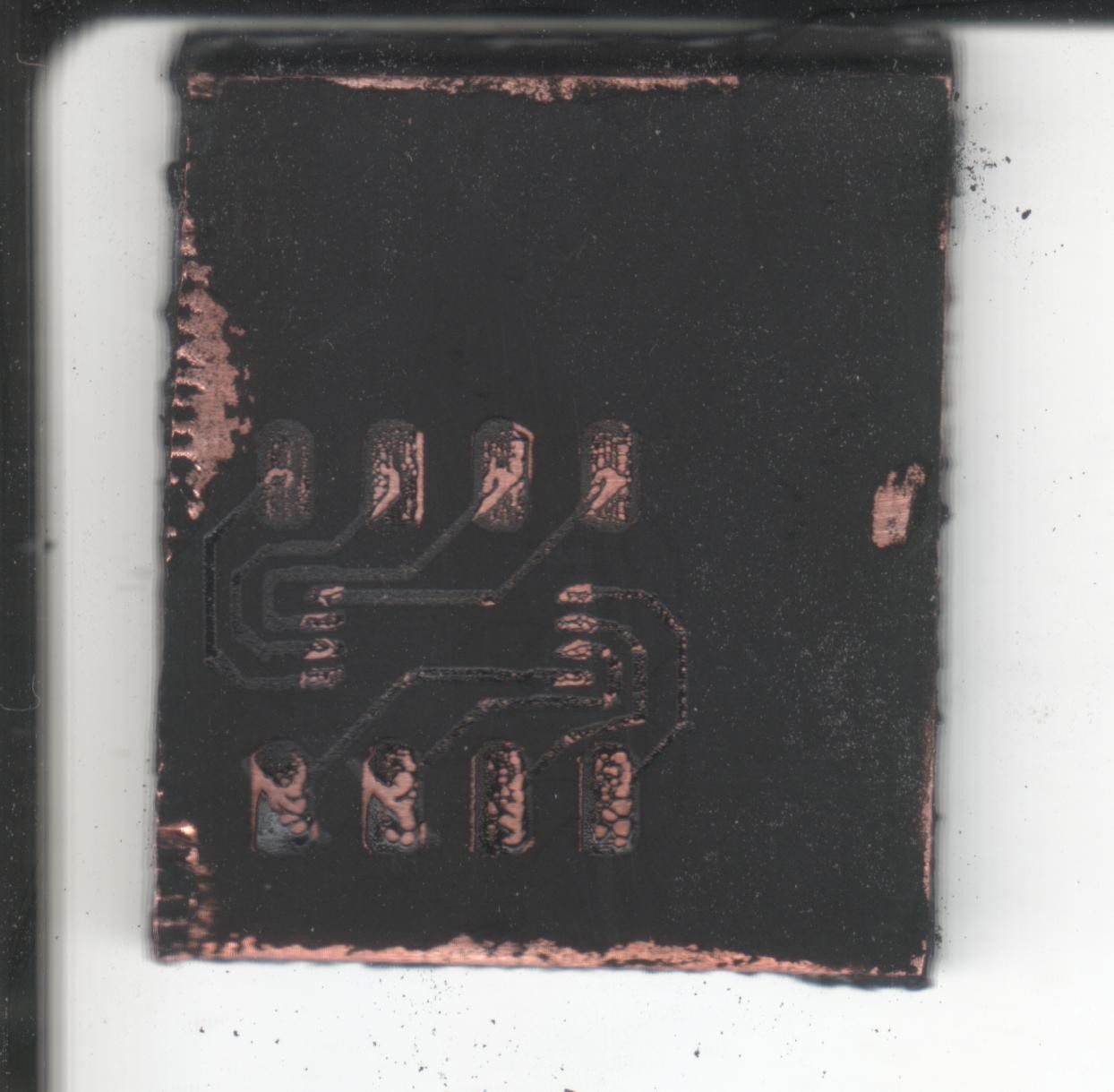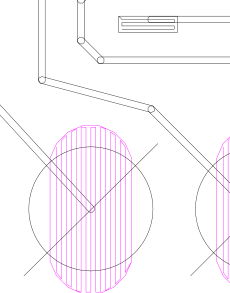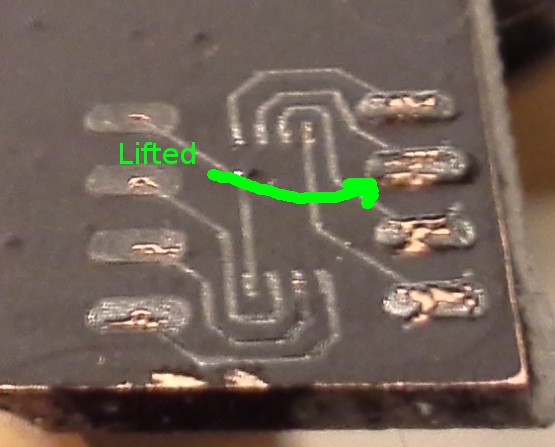Thin Slurry Feedrate 30mm/min

Thick Slurry Feedrate 80mm/min

The third test-run, Thick Slurry 160mm/min, had about as much improvement in visual quality (fewer burn-throughs, etc).
But, interestingly:
In the second-experiment, wiping up the un-melted toner was easier.. the traces seemed to stay adhered to the copper-clad OK... If I'd've been a bit more careful, they might've even stayed-adhered as all the un-melted toner was wiped-away.
In the third-experiment, the traces actually wiped off *before* the unmelted toner.

So, apparently, the toner melted to itself, but probably the coldness of the copper prevented it from adhering to it.
Plausibly: Heat the copper to something slightly lower than the toner's melting-point before lasering...?
Though, it seems there's also some importance in choosing a feedrate that is based on the path-taken by the laser... Note the pads always seem to "burn through"
Same feed-rate, but the laser passes much more quickly over these areas, nearly (if not) repeatedly.

Note that the circles formed at the joint between two traces are *almost* the size of a stepper-step... When the traces are drawn sometimes you'll get two passes side-by-side, or other times you'll get two passes right atop each other... so you can see that when the pads are drawn, it's quite likely there are *multiple* passes on the same path, in the same *step*, which causes the toner to melt more than a single-pass...

So... either adjust the feedrate depending on what's surrounding, or adjust the laser-intensity... Doable...
Or just find a *really* fine-tipped permanent-marker, add a solenoid, or throw in a rotary-tool, and avoid all these problems :/ But TSSOP with isolation-routing and a rotary-bit? Maybe not... (I still don't own a laser-printer, so toner-transfer isn't an option).
The lasering-toner-method is *really cool*, but it's a bit of work (and mess) mixing up the slurry every time, getting it just right... and when stored for even a few minutes it seems to "settle." Could probably be assisted with a well-sealed container and one of those magnetic mixing gadgets would probably help dramatically... hmm...
LOL, or shit... maybe I've got it all wrong... Maybe a *really light* pass over the toner, and isolation-routing...? Seems completely backwards, but look again at that image:

Those traces peeled up *easily* compared to the surrounding (un-melted) toner!
This one started as a strange-accident... I dropped it on the ground, and those pads lifted on their own:

Hmmmmmmm....
So, then, the idea would be to isolation-route the traces with the laser passing *very quickly* (so the copper-clad behind doesn't heat up), then wipe away the melted-toner, rather than the unmelted toner... Then throw it in the oven for a bit to set the remaining unmelted toner (where the traces are)...
Hmmmmmmmm.....
 Eric Hertz
Eric Hertz
Discussions
Become a Hackaday.io Member
Create an account to leave a comment. Already have an account? Log In.